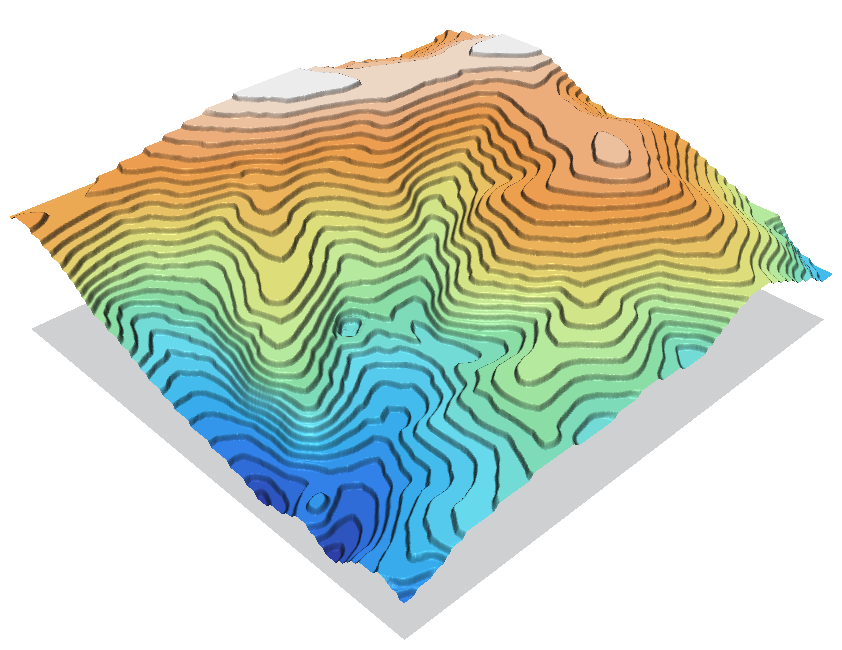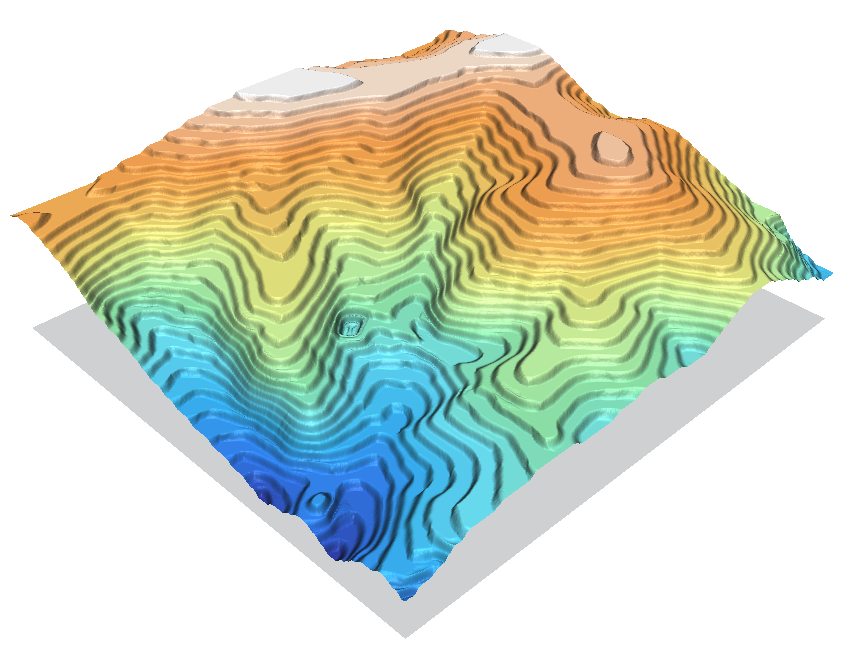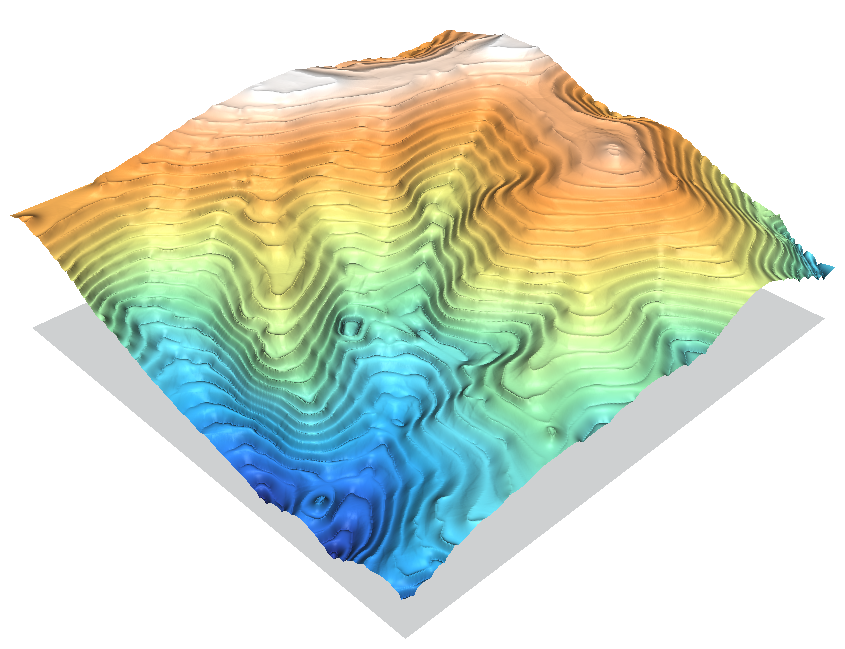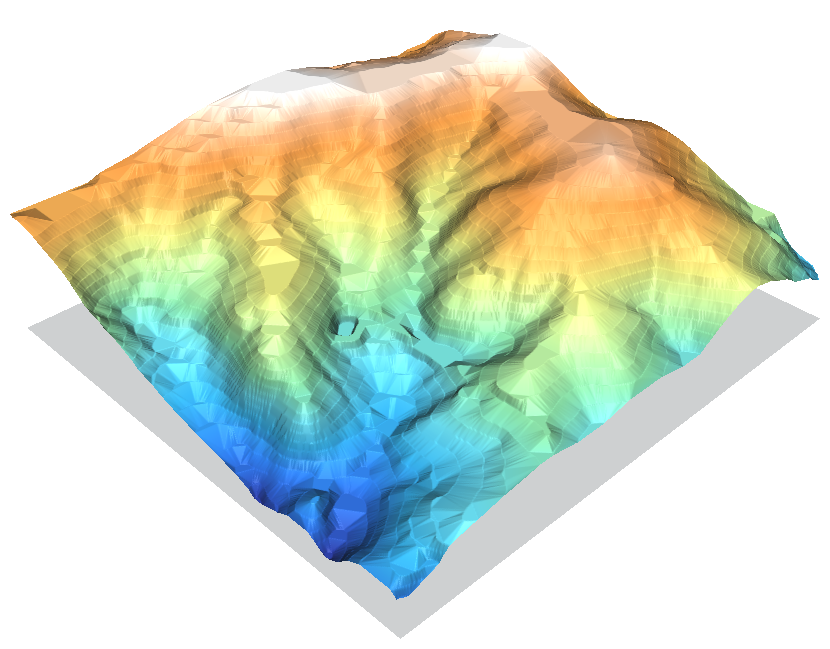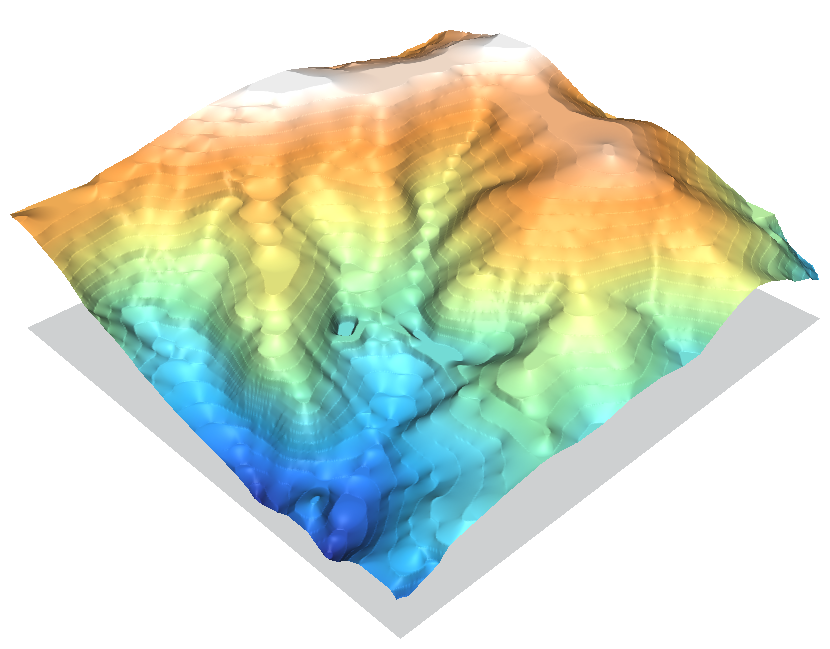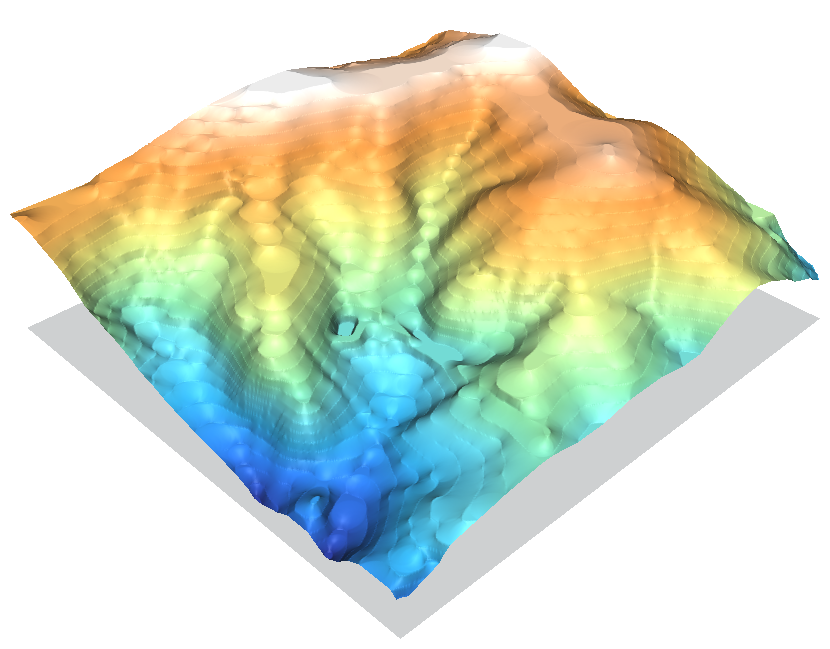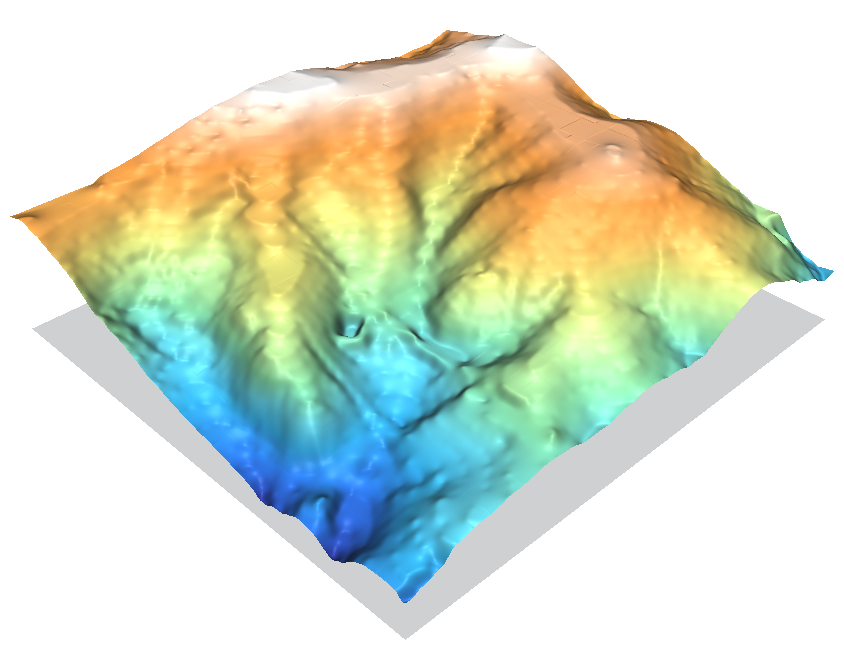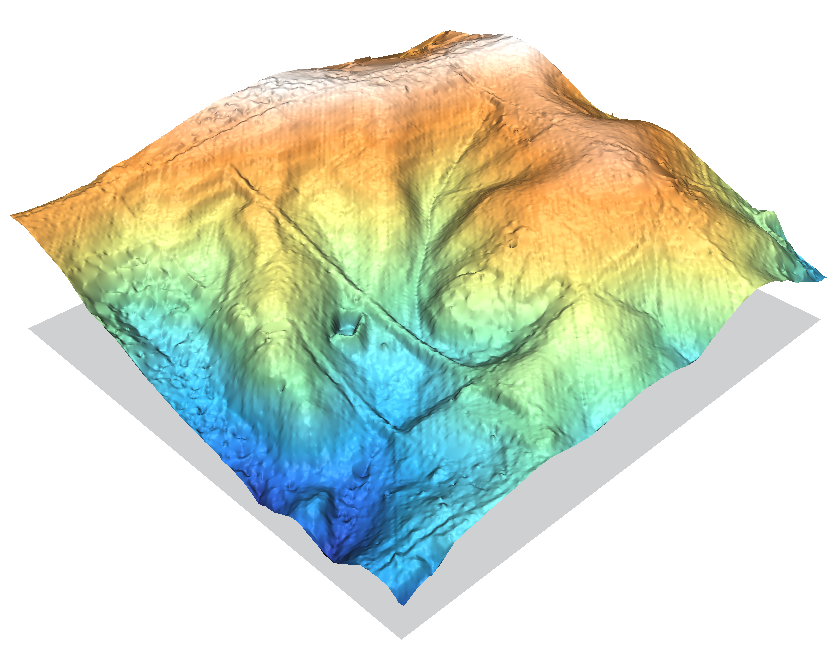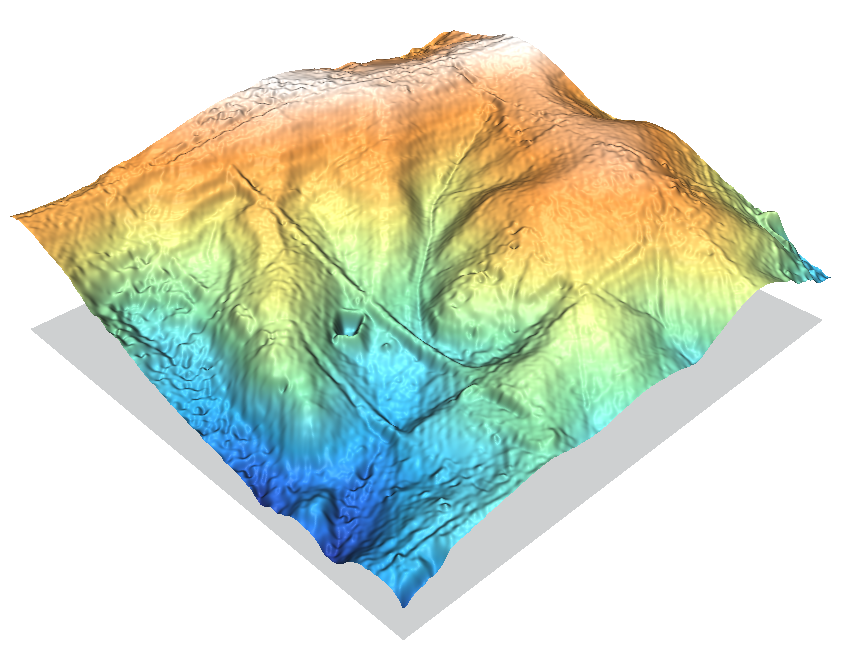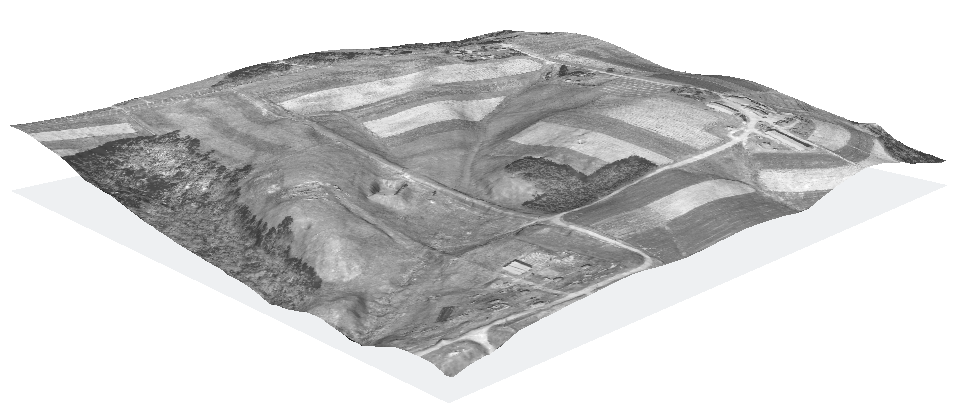Contour lines to DEM: Difference between revisions
| Line 42: | Line 42: | ||
[[Image:Contour1m_surf_idw_250.png|thumb|300px|left|r.surf.idw with npoints=250]] | [[Image:Contour1m_surf_idw_250.png|thumb|300px|left|r.surf.idw with npoints=250]] | ||
---- | |||
== r.surf.nnbathy == | == r.surf.nnbathy == | ||
Revision as of 15:38, 27 February 2010
About
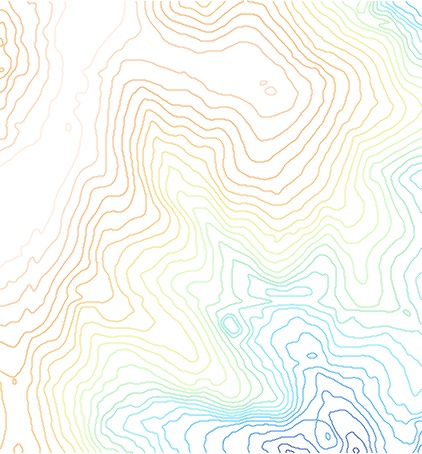
This page will demonstrate and compare a number of different methods of converting vector contour lines into raster DEM surfaces.
It uses the North Carolina sample dataset's elev_lid792_cont1m 1m contour line map as the starting point.
First we set the computational region to match the contour lines vector map, and then we force the resolution to align with a 1m grid:
g.region vect=elev_lid792_cont1m g.region res=1 -ap
We can display it on a Xmonitor to be sure:
d.mon x0 d.vect elev_lid792_cont1m -z zcolor=haxby
A number of the r.surf.* modules want the input data to be in raster form already, so we rasterize the contour lines, using the level column for the height values. Also some of the older r.surf.* modules only like to work on integers, so to preserve sub-meter fidelity we do a little trick where we multiply by a large number, do the process, then divide by that number again.
v.to.rast in=elev_lid792_cont1m out=elev.1mcont \ type=line column=level r.mapcalc "elev.1mcont.100k = elev.1mcont * 100000"
r.surf.idw
r.surf.idw (and r.surf.idw2) perform inverse distance weighting interpolation, using the n-closest data points to calculate the elevation of a cell, with the closest points having the greatest weight. As we have already converted to raster in the above v.to.rast step, the data points are evenly spaced in our 1m grid. As we expand the number of search points so that it reaches the next contour line, the lines begin to blur together.
r.surf.idw is much faster but does not create floating-point maps directly. Otherwise the module output is practically identical.
As you can see, r.surf.idw creates a rather terraced DEM so won't be to useful for contour line → DEM tasks. On the other hand, if you look at the central valley it does preserve the overland path of the stream quite well.
Commands used:
NPOINTS=36 r.surf.idw in=elev.1mcont.100k out=elev.1mcont.idw.100k npoints=$NPOINTS r.mapcalc "elev.1mcont.idw_$NPOINTS = elev.1mcont.idw.100k / 100000.0" g.remove elev.1mcont.idw.100k r.colors elev.1mcont.idw_$NPOINTS color=haxby
